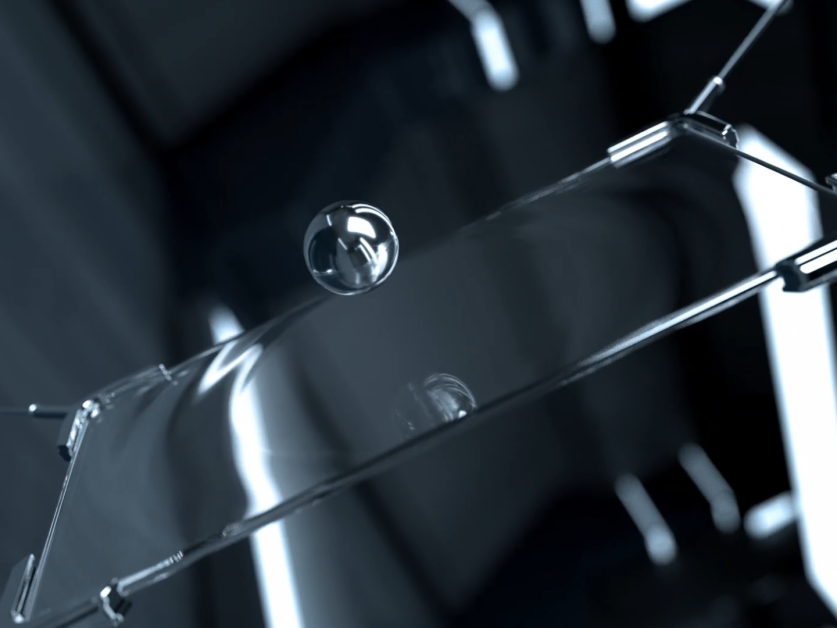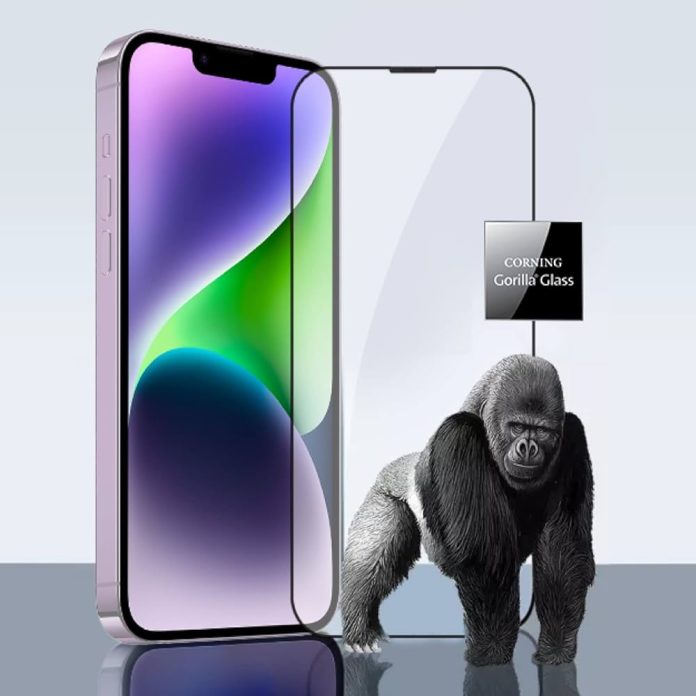Gorilla Glass is a cover glass to protect electronic device screens from drops and scratches. With a lightweight and ultra-thin design, the patented product is used in displays of cell phones, smartwatches, notebooks and tablets.
The American company Corning is the creator and sole manufacturer and distributor of Gorilla Glass. The company launched Gorilla Glass in 2007, initially exclusively for the iPhone. Corning later released optimized versions and expanded the distribution of the product to other devices.
The main benefit of Gorilla Glass is that it protects device screens from drops and cracks. In addition, the glass is light and thin, meaning it can be incorporated into different displays without compromising touch-sensitive technologies.
Below, understand what Gorilla Glass is, learn about the versions released, and check out the product’s advantages and disadvantages.
What is Gorilla Glass?
Gorilla Glass is a lightweight, ultra-thin cover glass designed to protect electronic device displays from damage, scratches and cracks. Launched in 2006 by Corning, the patented product is sold to Original Equipment Manufacturers (OEMs), who integrate it into the display layers of devices.

Gorilla Glass manufacturing begins with the production of thin sheets of glass through a drawing process. These sheets then undergo chemical ion exchange treatment, which increases their strength by creating a compression layer. The Gorilla Glass sheets are then distributed, cut, and integrated into OEM displays.
Who makes Gorilla Glass?
Corning is the sole manufacturer and distributor of Gorilla Glass, as the American company is also the creator of the product and owner of the patent. According to official company data, Gorilla Glass is produced in three countries: the United States, Japan and Taiwan.
Once manufactured, Gorilla Glass is distributed to Corning partners, who then incorporate it into the displays of their products. This means that Gorilla Glass ends up on the shelves integrated into electronics from other brands, even though it is exclusively manufactured by Corning.
What versions of Gorilla Glass are there?
Corning has released several models of Gorilla Glass since 2007, when the protective glass first appeared on the market. The versions, including their respective innovation aspects, include:
- Gorilla Glass 1: first version of Gorilla Glass presented to the world;
- Gorilla Glass 2: 20% thinner version, but with the same resistance;
- Gorilla Glass 3: model with greater scratch resistance;
- Gorilla Glass 4: introduction of drop protection;
- Antimicrobial Gorilla Glass: world’s first antimicrobial cover glass;
- Gorilla Glass SR+: glass composition that offers greater resistance, and aimed at the wearable segment;
- Gorilla Glass 5: designed to withstand drops of up to 1.2 meters;
- Vibrant Corning Gorilla Glass: introducing photorealistic printing technology;
- Gorilla Glass DX/DX+: optical improvements, and improved scratch resistance;
- Gorilla Glass 6: Designed to withstand drops of up to 1.6 meters;
- Gorilla Glass 3+: better drop protection compared to Gorilla Glass 3;
- Gorilla Glass Victus: significant improvements against drops and scratches;
- Gorilla Glass Victus 2: improved protection against drops on surfaces such as concrete;
- Gorilla Glass Armor: new material to enable unprecedented durability and visual experience;
- Gorilla Glass 7i: better resistance against drops and scratches, and aimed at the mid-range market.
What products contain Gorilla Glass?
Corning does not disclose all electronic devices equipped with Gorilla Glass, due to agreements with manufacturers. But the public list includes the following devices with Gorilla Glass:
- Smartphones;
- Smartwatches;
- Notebooks;
- Tablets.
Can I tell if my phone has Gorilla Glass?
Yes. You can check if your phone has Gorilla Glass by visiting the manufacturer’s official website and searching for your model, or by consulting your device’s manual. You can also check the list released by Corning, although the list does not include all covered smartphones due to agreements with manufacturers.
Is it possible to replace the Gorilla Glass on my phone?
Yes. If your phone gets damaged, you can replace the screen with Gorilla Glass. But keep in mind that Gorilla Glass is integrated into the device’s display and cannot be removed independently. In other words, you will need to replace the entire screen.
And it is worth making sure to have the exchange done at official or authorized technical assistance centers, to ensure that the replacement screen is original and contains Gorilla Glass.
What are the advantages and disadvantages of Gorilla Glass?
A leader in much of the electronics market with screens, Gorilla Glass offers benefits and some limitations. The product’s advantages and disadvantages include:
- Thin thickness: Gorilla Glass can be produced in a thickness of 0.5 millimeters, without causing excessive volume to the device’s screen;
- Comprehensive protection: glass includes proven protection against drops, scratches and daily wear and tear;
- Continuous development: Gorilla Glass innovation research is ongoing, which means that sophisticated new models are launched on a regular basis;
- Added value: Gorilla Glass adds value to the final device, which results in a higher price;
- Low competition: the lack of broader competition means that most electronics are equipped with Gorilla Glass, leaving consumers with fewer alternatives.
Are there alternatives to Gorilla Glass?
Yes. Vitreo Glass, Dragontrail Glass, Xensation and sapphire glass are some alternatives to Gorilla Glass, but they cover a smaller slice of displays on the market. There are also cell phone screen protectors, which play a similar role to Corning’s protective glass.
Developed by Corning, Ceramic Shield is also a product similar to Gorilla Glass. However, the protective glass is specifically designed for Apple’s iPhone 12 or later models.
What is the difference between Gorilla Glass and Ceramic Shield?
Gorilla Glass is a protective glass created by Corning, composed of silicon dioxide, aluminum, magnesium and sodium. Its manufacture involves drawing and ion exchange processes, and the final product can be integrated into the screens of different devices: cell phones, smartwatches, tablets and notebooks.
Ceramic Shield is a protective glass that includes nanoceramic crystals in its composition. The product is also manufactured by Corning, undergoes an ion exchange process and guarantees protection against scratches and falls like Gorilla Glass, but is exclusively intended for Apple iPhone models.
